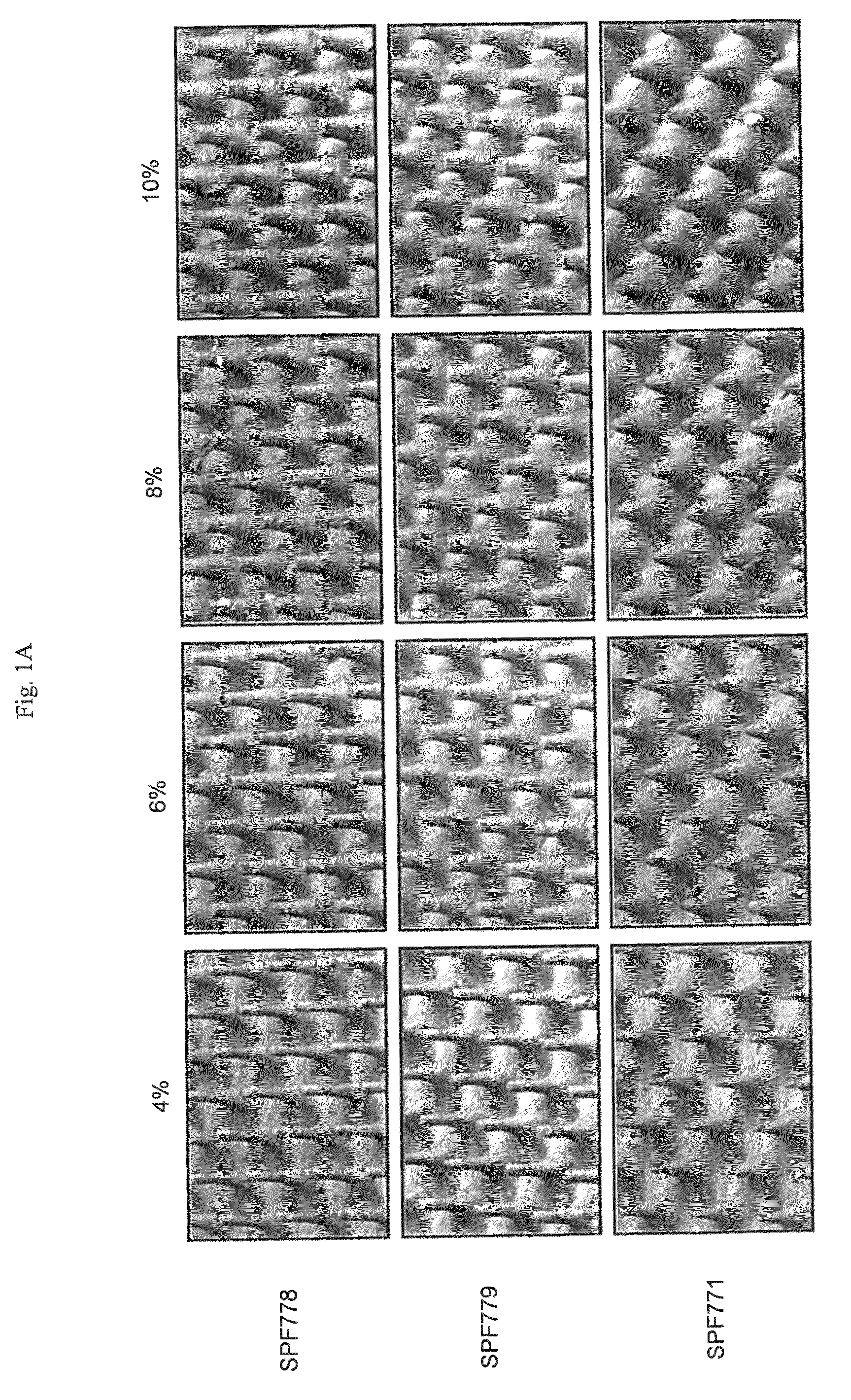Method of improving surface cure in digital flexographic printing plates
a technology of flexographic printing plate and surface cure, which is applied in the direction of photosensitive materials, instruments, photomechanical equipment, etc., can solve the problems of difficult to maintain small dots on flexographic printing plate, difficult to print fine dots, lines and even text, and easy damage to the press, so as to improve surface cure
- Summary
- Abstract
- Description
- Claims
- Application Information
AI Technical Summary
Benefits of technology
Problems solved by technology
Method used
Image
Examples
Embodiment Construction
[0068]Upon UV-curing in the presence of oxygen, the surface properties of a given photopolymer can be quite different from its bulk properties. This is mainly because oxygen inhibition strongly affects the surface layer upon UV exposure, thus disproportionately suppressing the curing reaction in the surface layer compared to the bulk. As a result, the most desirable properties for end-use product performance are not attained. In addition, the poor surface cure can significantly alter the size and shape of the relief features formed in the photopolymer by UV curing.
[0069]One such example is found in digital flexographic printing plates. Due to problems with curing the photopolymer layer, the following effects are typically observed:[0070](1) Smaller dot sizes than intended. Digital plates require “bumps” that artificially employ larger dot sizes in an electronic file to render the intended sizes on the plates, thus truncating the overall tonal.[0071](2) Poorly defined imaging edges p...
PUM
| Property | Measurement | Unit |
|---|---|---|
| average shoulder angle | aaaaa | aaaaa |
| average shoulder angle | aaaaa | aaaaa |
| wavelength | aaaaa | aaaaa |
Abstract
Description
Claims
Application Information
 Login to View More
Login to View More - R&D
- Intellectual Property
- Life Sciences
- Materials
- Tech Scout
- Unparalleled Data Quality
- Higher Quality Content
- 60% Fewer Hallucinations
Browse by: Latest US Patents, China's latest patents, Technical Efficacy Thesaurus, Application Domain, Technology Topic, Popular Technical Reports.
© 2025 PatSnap. All rights reserved.Legal|Privacy policy|Modern Slavery Act Transparency Statement|Sitemap|About US| Contact US: help@patsnap.com



